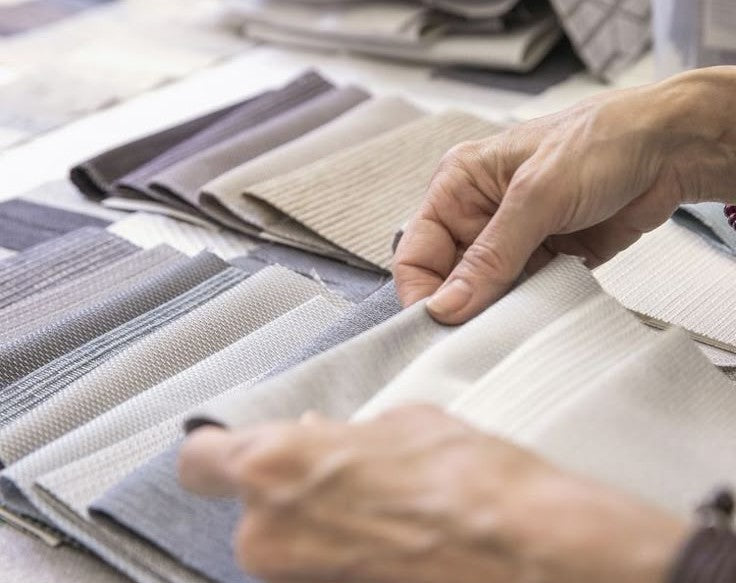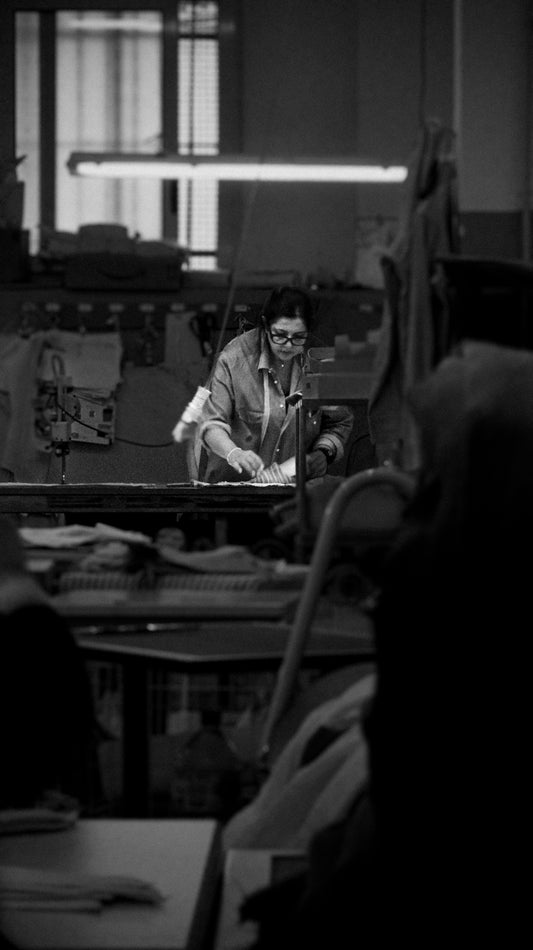
The language of touch: why quality is recognized through the hands
Quality perception begins with the hands
In tailoring, the authenticity of a garment is not judged by sight alone. The first real contact with a fabric happens through touch. Those who choose a made-to-measure piece also rely on the sensitivity of their hands: they feel, brush, stretch. The weave, the density, the reaction to pressure say much more than any label can. A good fabric not only looks elegant: it must convey solidity, balance, and reliability. It must be able to follow the body’s movements and endure over time, without deforming or giving way.
Knowing how to distinguish the material, not the appearance
Many materials may look alike but they are not. Cottons that seem soft at first glance can lose their tone after a few washes, while others, that feel drier to the touch, keep their structure for years. The difference is not visible: it is felt beneath the fingers. The experienced hand, whether of the customer or the tailor, can recognize quality even before the fabric is sewn. Touch gives information about the fiber’s consistency, its elasticity, and the fabric’s ability to adapt without ever losing its nature.
The tailor as a reader of the material
The tailor’s role is not only technical but also interpretative. Each fabric reacts differently to working processes, and those who cut and assemble it must know its behavior thoroughly. Ironing, folding, sewing: every gesture requires calibrated sensitivity. Artisan tailoring does not force the fabric but guides it. A quality fabric lets itself be shaped effortlessly and retains the memory of the form. This kind of work cannot be done or assessed remotely: it must be followed with the hands, step by step.
The truth lies in the gesture
In a time of digital choices and remote shopping, touch is the most neglected sense. But in tailoring, it remains sovereign. Touching is still an act of knowledge, trust, and authenticity. Because a garment that cannot be read with the fingers will never tell who we are.
Dressing well does not mean just choosing a nice fabric or a good cut. It means recognizing the tangible value of what we wear through direct experience. In tailoring, every garment begins with a simple but essential gesture: touching. Everything starts from there. And it is precisely from that silent and precise contact that what matters is distinguished from what passes by.







